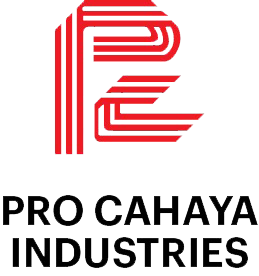Low-Code vs Traditional Coding in Manufacturing: What’s Right for Your Team?

Explore the key differences between low-code and traditional coding for manufacturers. Learn how Mendix accelerates digitalization, reduces cost, and empowers your team.
In today’s fast-evolving industrial landscape, speed, flexibility, and efficiency are everything. Whether you’re building a quality control app, automating approval workflows, or integrating IoT dashboards -the method you use to develop software matters.
Should your team stick with traditional coding, or is it time to explore low-code platforms like Mendix?
Let’s break down the differences in time-to-deploy, cost, resource requirements, and suitability for the manufacturing environment – and help you decide which path fits your digital strategy.
1. Development Speed
| Criteria | Traditional Coding | Low-Code (e.g., Mendix) |
| Average Time to Build | 3–6 months per application | 2–6 weeks per application |
| Changes & Iterations | Slow; often requires redeployment | Rapid; can be done visually in real-time |
| MVP/Prototype Speed | Requires full development cycle | Build and test prototypes in days |
Manufacturing Impact:
With changeover happening frequently on the shopfloor, manufacturers need tools that evolve fast. Low-code lets you respond faster to process changes, audits, and continuous improvement initiatives.
2. Cost & Resource Allocation
| Criteria | Traditional Coding | Low-Code |
| Hiring Requirements | Skilled full-stack developers | Business analysts + basic dev skills |
| IT Dependency | High | Moderate to low |
| Maintenance Cost | Higher (hard-coded apps need IT) | Lower (citizen developers can maintain) |
Manufacturing Impact:
Hiring full development teams can be expensive and time-consuming. With Mendix, your in-house engineers or planners can collaborate with IT to build and maintain apps—lowering long-term costs and boosting productivity.
3. Team Collaboration & User Involvement
| Criteria | Traditional Coding | Low-Code |
| Communication Gap | Often large between users and IT | Bridged by visual development |
| Involvement of OT Team | Limited | High – OT teams can co-create apps |
| Alignment with Business Goals | Sometimes misaligned | Closely aligned via collaborative development |
Manufacturing Impact:
Operators and engineers often know the pain points best – but with traditional coding, they’re not involved in the development process. Low-code democratizes software creation, making sure the solution matches the need on the ground.
4. Flexibility & Scalability
| Criteria | Traditional Coding | Low-Code |
| Customization | Fully flexible | High – with reusable components |
| Integration with ERP/MES/SCADA | Requires skilled API coding | Built-in connectors and integration tools |
| Future Scalability | Fully scalable but complex | Scalable with rapid extension capabilities |
Manufacturing Impact:
Low-code platforms like Mendix come with pre-built connectors to systems like SAP, Siemens Opcenter, and IoT devices, allowing manufacturers to integrate without reinventing the wheel.
5. Use Case Comparison
| Use Case | Traditional Coding | Low-Code (Mendix) |
| Production Order Tracker | Requires 2–3 developers for backend & frontend | Built in 1–2 weeks by a hybrid team |
| Quality Non-Conformance App | Involves multiple stakeholder reviews + code revisions | Drag-and-drop logic + real-time user feedback |
| Downtime Reporting System | Custom database & UI setup | Built with templates & integrated dashboards |
So, Which One Is Right for Your Team?
| Scenario | Best Approach |
| You need ultra-custom, backend-heavy systems | Traditional Coding |
| You want to digitize paper forms, approval flows, or dashboards fast | Low-Code (Mendix) |
| Your OT team wants control of their tools | Low-Code (Mendix) |
| You need to experiment or pilot digital tools quickly | Low-Code (Mendix) |
| You have a dedicated IT department with time & budget | Traditional or Hybrid |
Final Thoughts: Build Faster, Smarter, Together
Low-code doesn’t replace traditional coding—but it augments and accelerates it. For manufacturers who want to digitize faster, empower their teams, and stay competitive, Mendix offers a new way forward.
With its visual development environment, built-in integrations, and support for agile collaboration, Mendix enables Malaysian manufacturers to move from idea to solution – fast.
Ready to see what low-code can do for your factory?
Get a free Mendix discovery session tailored to your industry.

